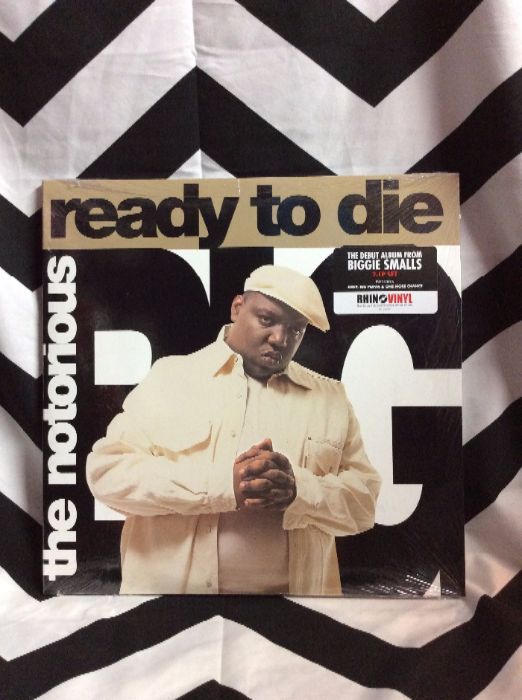
Shakur’s death amplified Biggie’s fears about his own life, and his concern was tragically validated on March 9, 1997. Rumors of Biggie’s involvement immediately began to make the rounds, and when the rapper was one of the few Hip Hop artists not to make an appearance at an anti-violence summit that was held in Harlem a few weeks later, the finger-pointing intensified. In September 1996, East Coast-West Coast battle heated up even further, when Shakur was murdered in a drive-by shooting in Las Vegas. Shakur added fuel to the flames with a pointed slam on the East Coast rap world in the single, “Hit ‘Em Up,” in which he claimed to have slept with Biggie’s wife, Faith Evans. The two men survived and Shakur came out blazing, accusing Biggie and Combs of orchestrating the attack. The rivalry turned into an East Coast-West Coast feud (with Combs and Biggie representing the East), and the tension escalated in 1994, when Shakur and a member of the Wu-Tang Clan were shot and robbed. His most famous battles, however, occurred with others in the Hip Hop industry, most notably with Tupac Shakur, Marion “Suge” Knight and Death Row Records. Later, he took a baseball bat to a group of autograph seekers. In May 1995, he allegedly beat up a man after they got into a dispute over a cancelled performance. The large rapper-at 6 feet and three inches, and tipping the scales at nearly 400 pounds-said that he jumped whenever the door to his apartment building opened, fearing that someone might want to hurt him.īiggie’s fear led to anxiety, which led to spurts of aggression. In 1994, he told The New York Times that he was disliked for having more money, which came with his fame.

In the immediate aftermath of Ready to Die’s popularity, the rapper found himself in constant fear. However, success and wealth hardly brought peace to Biggie’s life. By the close of 1995, Biggie was one of music’s best-selling and most sought after performers. He also teamed up with such stars as Michael Jackson and R. He backed the work of several rappers that he’d originally performed with while starting out in Brooklyn, and took to the studio in support of other artists on Sean “Puffy” Combs’s label. That same year, The Source named the rapper “Best New Artist,” “Best Live Performer” and “Lyricist of the Year.”Īs his star power increased, Biggie did his best to share his prestige. Backed with hits like “Juicy” and “Big Poppa,” the record went platinum and the young Hip Hop artist became a full-fledged star. released his debut album, Ready to Die, which told the story of his life, from drug dealer to rapper. Blige’s single, “Real Love,” and followed it up with a second Blige remix, “What’s the 411?” His debut as a solo artist came with the single, “Party and Bullshit,” on the soundtrack to the film, Who’s the Man? (1993). Immediately, The Notorious B.I.G., as he now called himself, got to work, appearing on a 1993 remix of Mary J. When Combs split off from Uptown to start his own label, Bad Boy Entertainment, he brought Smalls with him. The article was enough to catch the attention of Sean “Puffy” Combs, a young producer at Uptown Entertainment, a New York-based label specializing in Hip Hop and rhythm and blues. After a tape of his landed in the hands of Mister Cee, a well-known DJ, Smalls was featured in Hip Hop publication The Source. He hooked on with a crew called the “Old Gold Brothers,” and began experimenting on his own.Īround his neighborhood, Biggie Smalls, as he called himself then, began building a reputation as a musician. As he navigated his young, uncertain life, Biggie started making music. It didn’t matter where you went, it was all in your face.”Īt the age of 17, Biggie was arrested for selling crack, and spent nine months in a North Carolina prison before making bail. “Everything happened on the strip I grew up in. As a result, by his early teens, Biggie had joined the life that was all around him. Biggie, or “The Notorious B.I.G,” as he’d later become known, experienced a rough childhood-at an early age, he was surrounded by drug addicts and dealers. Biggie was killed in Los Angeles on March 9, 1997.īiggie Smalls was born as Christopher George Latore Wallace on in Brooklyn, New York, in the neighborhood of Bedford-Stuyvesant. His 1994 debut album, Ready to Die, was a smash hit, and his long-running feud with fellow rapper, Tupac Shakur, helped to shape his career. He started experimenting with music as a teenager and, not long after, befriended Sean “Puffy” Combs.

Born as Christopher Wallace on May 21, 1972, in Brooklyn, New York, Biggie Smalls, also known as Notorious B.I.G., became a drug dealer at a young age.


 0 kommentar(er)
0 kommentar(er)
